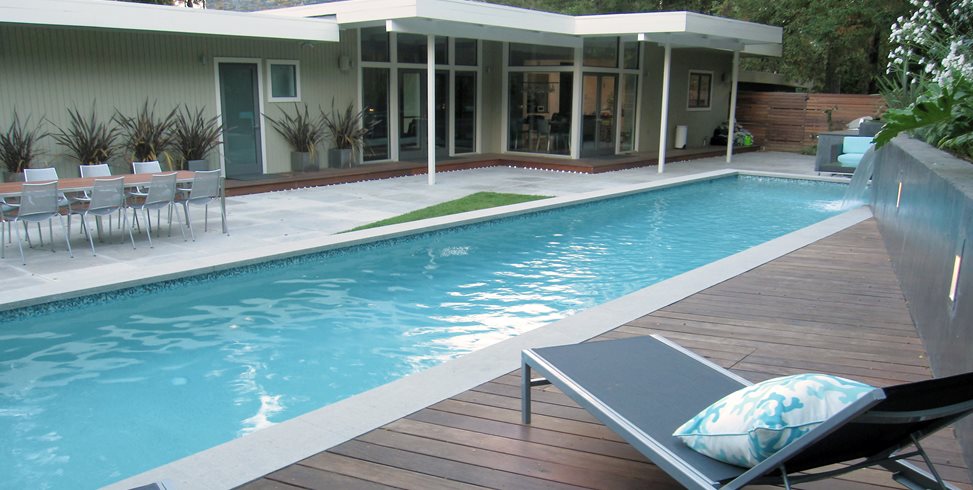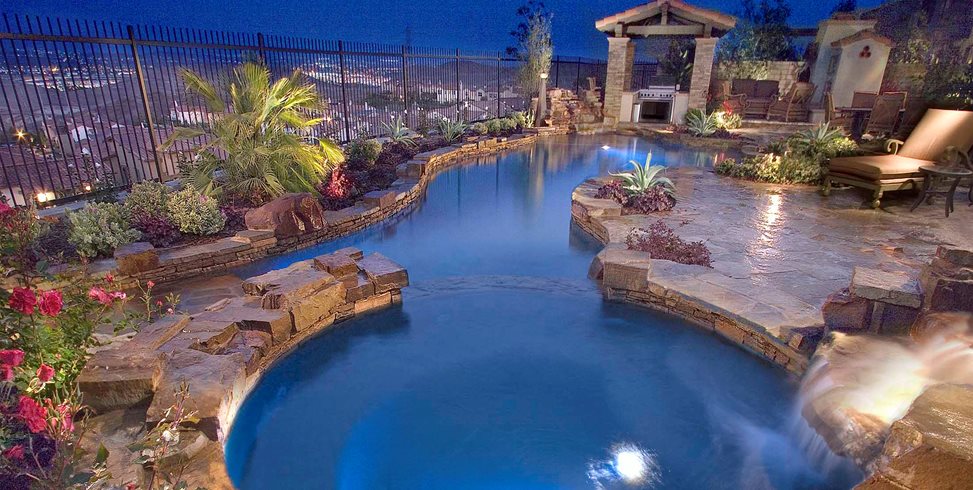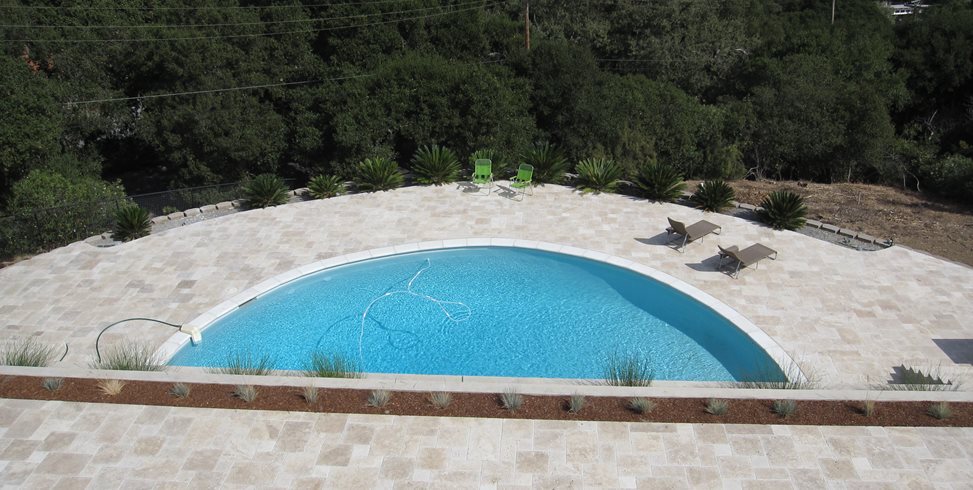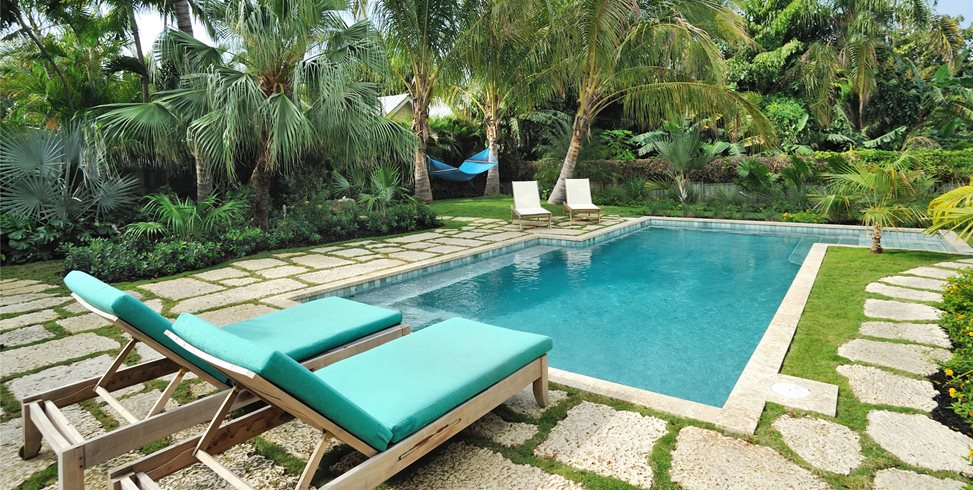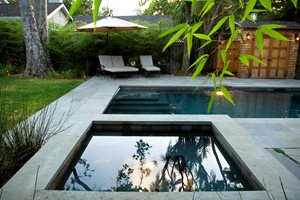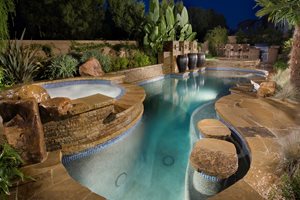Pool Deck Materials
Compare surface options such as concrete, stone and more for your pool deckPool decks have long been made of poured concrete, but this is changing with some contractors and in some regions. Issues related to concrete cracking and the complexity of repair is making this a less viable option than it was in the past. The emphasis on permeable paving is also driving changes here. Above all though, the use of unit paving in lieu of poured slabs has introduced some new materials to the pool deck world. Issues related to perimeter overflow pools and their small invisible gutters are also driving new ideas for exotic hardwoods such as ipe.
- Good decking materials resist excessive heat absorption.
- Good decking materials are easy on bare feet.
- Good decking materials won't become slippery when wet.
Most pool decking will fall into one or more of the material choices below. Some of these are highly variable with dozens of options, while others are more static. One reason for an increased interest in units rather than slabs is recent EPA regulations related to site runoff. Permeable pool decking that allows water to flow through is a requirement in areas where LEEDS regulations are in force. This has opened up a new approach to decks that utilize unit pavers of any size and shape, which shift naturally with the earth rather than cracking.
Concrete:
Traditional poured concrete deck with finishes: tinted concrete; stamped concrete; exposed aggregate; accent bands at expansion joints and edging. Prone to cracking in colder climates. Cost: low. Colors: many.
Unglazed Tile:
Large red clay tiles known as quarry tile or Saltillo pavers when made in Mexico. Thin stone tile also provides similar effect. Cost: low to medium.
Pavers:
Quality precast concrete pavers come in a huge variety of shapes, sizes and colors. They are able to move with the ground to eliminate cracking. Permeable. Cost: low. Colors: many.
Travertine:
A travertine pool deck is a nice upgrade over standard concrete pavers. Set on a gravel and sand base. Cost: med to high. Colors: earth tones.
Stone:
Stone paving may be laid on a poured concrete slab or larger flagstones laid on a compacted aggregate bed. Wide range of stone options excluding those which absorb excessive heat or are very dark in color. Permeable. Cost: high.
Wood:
The introduction of exotic hardwoods such as ipe is a growing element of modern pools where the look and feel of a wood deck is a natural contrast to man made industrial materials. Wood is high maintenance requiring refinishing on a regular basis to maintain uniformity and color. Cost: medium to high.
Brick:
Less popular than it was in the 20th century, brick remains a viable decking material preferred for historic houses or homes where brick is a strong architectural element. Use smooth brick that's easy on bare feet. Cost: medium.
Spray-On Coatings:
Spray-on coatings are usually a cement blended product that are sprayed onto the existing surface of a pool deck. One popular spray-on coating is Keystone Kool Deck, a concrete topping that provides a colored and textured cement surface. This product offers significantly lower surface temperatures, and is easy to maintain, according to the manufacturer Mortex.
Rubber:
Rubber is a relatively unknown surface option for pool decks but provides a great soft and nonslip surface that is able to withstand outdoor elements. Pebble-flex is an example of this type of product which is recognized more widely as the surface below public playground equipment. The product can be colored and designed into patterns or logos, is UV-resistant, and offers easy clean up. Learn more at Pebbleflex.com.
Expert Tip:
- Light-colored paving reflects heat and will be more comfortable on bare feet
- A pool deck should slope slightly away from the pool for efficient run-off
- A large pool deck will prevent leaves and other debris from finding their way into the water
In southern California, luxury pool builder Shea Alderete is keen on pavers as the best choice for pool decks. "Poured concrete will crack, and you have huge removal and replacement costs to solve a problem. Pavers move with the soil and are easily repaired. You'll get more bang for your buck and they're more friendly to the look of the site. We're using interlocking pavers with natural stone ribbon or poured in place decking pieces. We also put stone in and work pavers around it."
Pavers are also a natural for the modern pools designed by Ive Haugeland of Shades of Green in San Francisco. "We're using a lot of concrete and wood. We're using glass tiles embedded into concrete with groundcover in between. Concrete pavers are also our preference because we like to add permeability and the look it creates."

 Backyards
Backyards
 Front Yards
Front Yards
